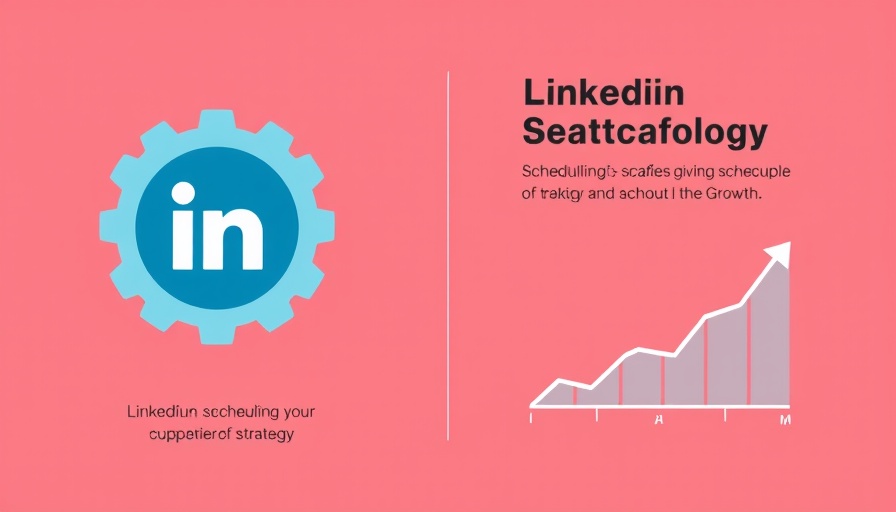
Why Scheduling LinkedIn Posts is a Game Changer for Businesses
In today's fast-paced business environment, the ability to maintain a consistent and engaging LinkedIn presence can significantly impact how small and medium-sized businesses connect with their audience. According to recent statistics, LinkedIn boasts a median organic engagement rate of 8%, making it one of the leading platforms for professionals to share and consume content. Scheduling posts allows businesses to curate their content strategically, ensuring messages resonate with audiences at optimal times.
The Power of Scheduling: A Simple Overview
Scheduling LinkedIn posts involves planning and preparing content in advance, enabling businesses to maintain a steady flow of communication without the stress of last-minute posting. By leveraging this strategy, professionals can save time, mitigate stress, and enhance their content's visibility. Here we explore two straightforward methods for scheduling posts on LinkedIn, ensuring that your key messages are delivered even when you’re busy.
Using LinkedIn Itself to Schedule Posts
LinkedIn’s native scheduling feature simplifies the process for users wanting to manage their content directly. To utilize this feature, navigate to the 'Create a post' section and select 'Schedule', where you can choose a preferred time and date. This built-in functionality serves those who primarily engage with the platform directly rather than using third-party tools.
Maximize Your Efficiency with Buffer’s Scheduling Tool
For those businesses looking to streamline multiple social media platforms, Buffer offers an efficient solution. With Buffer, you can write your posts, attach necessary media, and share them across various platforms, including LinkedIn. This capability is particularly beneficial for small and medium-sized businesses aiming to maximize their reach without increasing their workload. Buffer also provides analytics to gauge post-performance, enabling more informed strategies moving forward.
Understanding the Distinction: Personal Profiles vs. Company Pages
It's essential to recognize the difference between LinkedIn personal profiles and company pages. Personal profiles are tailored to showcase individual expertise, insights, and connections, whereas company pages represent a brand's ethos, products, and updates. Each serves distinct purposes in the professional networking sphere, and businesses can benefit from using both strategically to create a harmonized online presence.
Best Practices: Quick Tips for Scheduling Posts
1. **Analyze Engaging Times**: Leverage analytics from your previous posts to identity optimal posting times. 2. **Content Batching**: Create content in batches to save time and maintain consistency. 3. **Plan for Different Audience Segments**: Tailor messaging for diverse audience segments to enhance engagement.
Future Insights: Where Is LinkedIn Headed?
As the digital landscape continues to evolve, LinkedIn is likely to enhance its features around content scheduling and analytics. This trend indicates that those who adopt early will see an advantage in reaching and engaging with their target markets effectively. Businesses that leverage emerging tools and insights will have a competitive edge in this rapidly changing environment, improving their capacity to connect meaningfully.
The Value of LinkedIn for Small and Medium Businesses
Understanding LinkedIn’s intricacies not only helps in scheduling posts effectively but also in building long-term reputation and credibility within your industry. In a world driven by digital connections, investing time in scheduling posts on LinkedIn can lead to an enhanced reputation that translates into tangible business growth.
Conclusion: Get Started with Scheduling!
In summary, the ability to schedule posts on LinkedIn is not just a time-saving technical skill; it serves as a strategic advantage for small and medium-sized businesses looking to enhance their market presence. Embrace the art of scheduling today to ensure your voice is heard, even when life gets busy. Invest in this crucial aspect of your marketing strategy and watch your professional network flourish!
 Add Row
Add Row  Add
Add 




Write A Comment